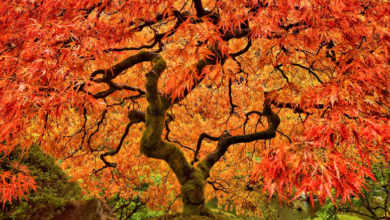The flower of veneration chapter 1

Ever wondered how certain vegetation keep special significance in diverse traditions and cultures? Flowers have always been more than just pretty blooms. They bring deep symbolic meanings and are often intertwined with rituals of admire and veneration. In “The Flower of Veneration,” we dive into a story that explores these subject matters in a richly detailed global. This article breaks down Chapter 1 of this fascinating tale, dropping mild at the historic, cultural, and symbolic facets that make it captivating.
Historical Background
Veneration practices date lower back to historical instances, with roots in numerous spiritual and non secular traditions. From providing flora at temples to using them in ceremonies, those practices have developed significantly. In many cultures, veneration is visible as a way to honor deities, ancestors, and nature. Historical figures like Buddha and Confucius emphasized the importance of reverence and respect, which might be key factors in the narrative of “The Flower of Veneration.”
Cultural Significance
Veneration transcends cultures, taking on precise forms in special societies. In Japan, for example, the exercise of offering cherry blossoms symbolizes the brief nature of existence. In Hinduism, marigolds are commonly used in rituals to honor gods and goddesses. Each culture has its way of expressing veneration, reflecting its values and beliefs. “The Flower of Veneration” attracts on those numerous traditions to build a global wealthy in cultural depth.
Symbolism of Flowers in Veneration
Flowers used in veneration are selected for his or her symbolic meanings. Roses frequently symbolize love and respect, lilies represent purity, and chrysanthemums denote sturdiness. The tale faucets into those symbolic meanings, using flora as metaphors for the characters’ trips and feelings. Regional versions upload every other layer of complexity, because the identical flower can deliver distinctive meanings in exceptional cultures.
The Concept of The Flower of Veneration
At the heart of the tale lies the enigmatic Flower of Veneration. This mystical flower is said to encompass the essence of reverence and admire. Mythology often features such plant life, believed to possess divine qualities. In literature, they represent purity, spiritual awakening, and the interconnectedness of life. The story of “The Flower of Veneration” weaves these factors into a compelling narrative.
The Protagonist’s Journey
Chapter 1 introduces us to the protagonist, a young and curious character named Aria. Aria’s journey begins in a small village, in which veneration practices are an fundamental a part of daily life. Driven by a deep feel of interest and a preference to understand the world, Aria units off on a quest to locate the legendary Flower of Veneration. This adventure is fraught with challenges and discoveries that shape Aria’s individual and beliefs.
Setting the Scene
The story unfolds in a lush, colourful international that feels almost timeless. The village wherein Aria’s journey starts is surrounded via dense forests and towering mountains, a place steeped in tradition and history. The writer paints a brilliant image of this placing, the use of exact descriptions to immerse the reader within the environment. This backdrop affords a wealthy context for the unfolding narrative.
Plot Overview
In Chapter 1, we see Aria’s existence in the village, the preliminary spark of curiosity, and the selection to embark on the adventure. Along the way, Aria encounters diverse characters who every play a role in shaping the route beforehand. From smart elders to mischievous spirits, these encounters add depth to the story. Key events consist of a village festival wherein the Flower of Veneration is first cited and a mysterious dream that units Aria on the course to discovery.
Themes and Motifs
The topics of reverence, discovery, and transformation are important to the tale. Aria’s adventure isn’t always just bodily however additionally religious, exploring the depths of respect and the hunt for know-how. Motifs along with vegetation, dreams, and historic rituals recur at some point of the narrative, reinforcing these themes and adding layers of which means. These elements are intricately woven into the plot, making them essential to the reader’s experience.
Character Development
Aria’s person grows notably in Chapter 1. From a naive and curious adolescents, Aria starts offevolved to reveal signs of a deeper knowledge of the world. Relationships with different characters, which includes the wise village elder and the mischievous woodland spirit, spotlight one of a kind components of Aria’s personality and make a contribution to this growth. Each task confronted by using Aria is a step in the direction of greater awareness and self-recognition.
Symbolism and Imagery
The use of symbolism and imagery in “The Flower of Veneration” is masterful. Flowers characterize one of a kind aspects of lifestyles and spirituality, while dreams and visions offer insights into the characters’ internal worlds. The imagery of the herbal global, from blooming flowers to flowing rivers, creates a shiny backdrop that enhances the story’s issues. These elements draw the reader in, making the narrative each engaging and notion-provoking.
Literary Devices
The writer employs diverse literary gadgets to enrich the narrative. Metaphors and similes create vivid comparisons that enhance the reader’s knowledge. Foreshadowing pointers at destiny occasions, building suspense and intrigue. Dialogue is used efficaciously to reveal character traits and strengthen the plot. These gadgets make a contribution to the story’s intensity and complexity, making it a profitable examine.
Reader Engagement
Chapter 1 of “The Flower of Veneration” captivates the reader with its rich international-constructing, compelling characters, and tricky plot. The emotional and intellectual appeal of the story continues readers hooked, keen to see what takes place next. The creator skillfully balances motion and introspection, growing a story that is each exciting and reflective. This balance guarantees that readers are not most effective entertained but also deeply engaged.
Conclusion
“The Flower of Veneration” is a tale that explores profound themes thru a richly specified narrative. Chapter 1 units the degree for an epic adventure, introducing us to a world wherein veneration and respect are relevant to existence. The protagonist, Aria, embarks on a quest that guarantees to be filled with journey, discovery, and transformation. As the tale unfolds, readers can look ahead to a deeply engaging and concept-upsetting enjoy.
FAQs
What is the significance of veneration in literature? Veneration in literature frequently symbolizes respect, reverence, and a deep connection to tradition and spirituality. It can be used to discover subject matters of honor, religion, and the human enjoy.
How does the protagonist’s adventure start? Aria’s journey starts offevolved with a spark of curiosity and a desire to apprehend the sector past the village. This leads to a quest to discover the mythical Flower of Veneration, marking the begin of an epic journey.
What are the key subject matters in Chapter 1? Key issues consist of reverence, discovery, transformation, and the quest for information. These issues are explored via the protagonist’s adventure and the wealthy cultural context of the story.
How is symbolism used within the narrative? Symbolism is used considerably, with plant life representing various factors of life and spirituality. Dreams and visions offer insights into characters’ internal worlds, and the natural global serves as a backdrop that enhances the tale’s subject matters.
What can readers anticipate within the following chapters? Readers can count on in addition development of the protagonist’s journey, deeper exploration of the tale’s issues, and continued use of wealthy symbolism and imagery. The narrative guarantees to be both engaging and idea-upsetting, with many surprises alongside the manner.



